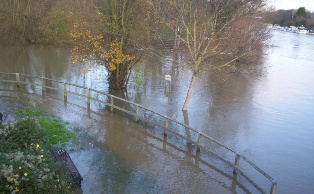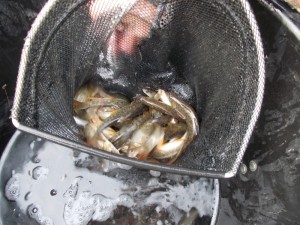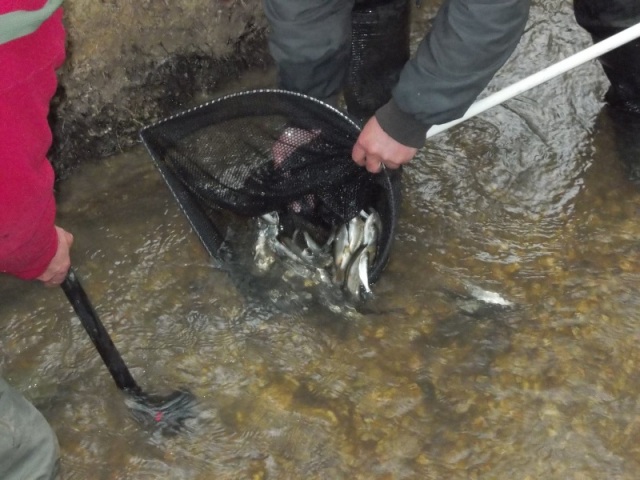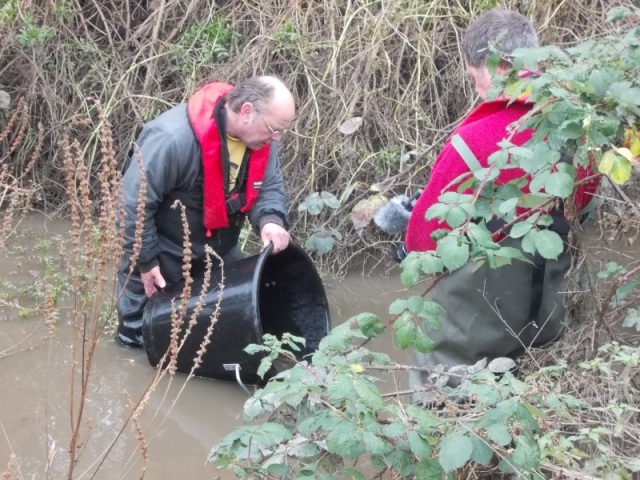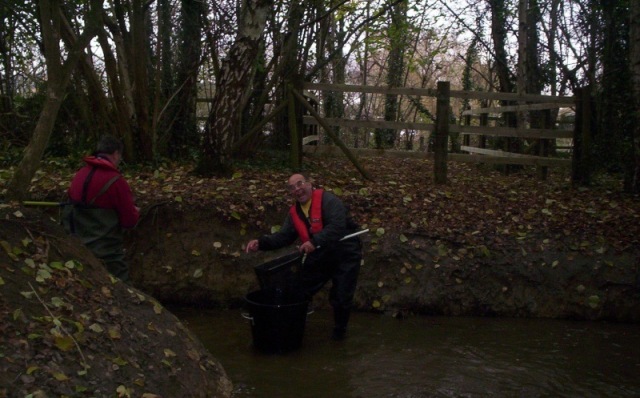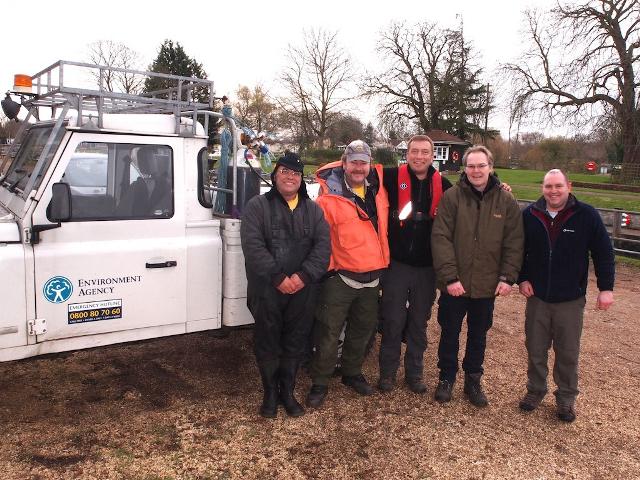-
- Buy a UK rod licence: EA Link
- 0800 807060 EA Hotline, Pollution, Poaching
- Thames Region River Levels
- Thames River Conditions
- Thames Temps and Clarity
- Thames Fishing Byelaws
- Thames Annual Tidefest
- Thames Record List
- Thames Eel Monitoring
- EA Annual Fisheries Report
- EA Flood Warnings
- Thames Sewage Discharge Notifications
- Thames Sewage Events
- Thames Tideway Tunnel
- River Thames Scheme: Reducing flood risk from Datchet to Teddington
- Martin Salter: Fighting for Fishing Blog
- Duncan Charmans World of Angling Blog
- Angling Trust
- Water and sewerage companies in England: environmental performance report 2013 – 2016
- EA Pollution incidents: 2014 evidence summary
- EA Pollution incidents: 2015 evidence summary
- River Crane and DNR Fisheries Impact assessment
- Links
Recent Tweets
Error retrieving tweetsNews Archive
Water reports shows 6th month of above average rainfall
Soil Moisture Deficit, Recharge and Groundwater Levels
Posted in News
Tagged Drought, EA, Environment Agency, Flood, Water Report
Comments Off on Water reports shows 6th month of above average rainfall
Sustainable drainage and the ‘Supersewer’
Richard Aylard, Thames Water’s Director of External Affairs and Sustainability, explains in Thames Estuary Partnership’s magazine ‘Talk of the Thames’ why the proposed Thames Tideway Tunnel and Sustainable Urban Drainage Systems (SuDS) each have a vital role to play in tackling sewage discharges to the River Thames. The Sir Joseph Bazalgette memorial, tucked away on The Victoria Embankment at the bottom of Northumberland Avenue, rewards close inspection.
Sadly overlooked by the majority of passers-by, it provides an intriguing insight into the debate about whether SuDS could provide an alternative to the Thames Tideway Tunnel. Although he is justly credited as the founder of London’s modern sewer network, the great man’s memorial, like his own drawings, actually refers to ‘London’s main drainage system’.
Read the full article
Posted in News
Tagged SuDs, Super Sewer, Thames, Thames Water, Tideway Tunnel
Comments Off on Sustainable drainage and the ‘Supersewer’
Environment Agency prepares Canal fish rescue
Thousands of fish washed out of the Tiverton Canal and into a flooded field following the collapse of a section of canal bank are about to be returned to their former home thanks to a major fish rescue organised by the Environment Agency.
The sudden collapse of the bank following torrential rain sparked a flood alert in Holbeton after it flooded a field on the outskirts of the village. Fish including, pike, bream, roach, tench, perch and eels were washed into a lake that quickly formed following the breach. On Monday (Dec 3) a team of Agency officers helped by members of the Tiverton Angling Club will set to work rescuing the fish that will die if left in the flooded field.
Pumping has reduced the size of the lake that still measures approximately 150 by 60 metres and is up to 7ft deep in places. Devon County Council, which owns the Tiverton Canal, has installed two temporary dams to prevent further loss of water and these will remain in place until the bank repairs have been completed. The Agency will use a boat to net the fish that will then be returned to the canal.
Officers have been waiting for the lake to sufficiently reduce in size, through ‘over-pumping’, before going ahead with the rescue.
‘This will make it easier to net the fish. We plan to rescue as many as possible and return them safely to the canal. There have already been some losses with birds including gulls feeding on a number of dead fish at the waters edge, but there are still plenty of fish left in the lake and we are keen to get them out and back in the canal,’ said Nick Maye for the Environment Agency. The rescue, that is expected to take up to two days, might be delayed until Tuesday if water levels rise due to further rainfall over the weekend.
Posted in News
Tagged Environment Agency, Fish
Comments Off on Environment Agency prepares Canal fish rescue
Hydropower scheme stopped in Historic legal case by Anglers
 Fish Legal has won an historic injunction against a multi-million pound hydropower development on the River Trent at Sawley Weir, in the process exposing major failings in the regulatory process.
Fish Legal has won an historic injunction against a multi-million pound hydropower development on the River Trent at Sawley Weir, in the process exposing major failings in the regulatory process.
The membership association Fish Legal, acting for its member the Pride of Derby Angling Association (PDAA), has won the biggest case in its 64 year history by securing an injunction to stop impending construction of a flagship hydropower scheme at Sawley Weir on the River Trent.
The case was heard at a four day trial in Nottingham County Court against developers the Small Hydro Company and the Canal and River Trust (CRT – previously known as British Waterways). Fish Legal’s expert lawyers and legal counsel fought the case on the grounds that the development would have destroyed the PDAA’s 1,200 members’ enjoyment of their prime stretch of river fishing on which they own the freehold rights. The Judge found that the developers and the CRT did not consult with the PDAA until very late in the planning process, and that they should have made much more careful enquiries about the fishing rights at the outset. Indeed it appears that the company and the waterways charity CRT turned a blind eye to those rights in an attempt to sideline those with most to lose from the scheme – anglers.
The Judge recognised that they either ignored or were aware of the risks, both to the scheme and the fishing rights, but they pushed forward with their plans anyway. If the scheme had gone ahead, the natural riverbanks would have been transformed into a 150 metre-long concrete and steel industrial facility with floodlights and alarms sounding off at intervals. Anglers were expected to access their fishing via a locked security gate into a fenced compound and to perch themselves and their equipment on a series of metal platforms suspended up to eight feet above the river.
The developer’s own health and safety witness conceded in court that this would put them “at risk of death”. The Judge ruled that the club should not be forced against its will to accept the proposal at the expense of its valuable fishing rights and that the scheme should not go ahead. The company had tried to pressurise the club to accept its plan and, in spite of the anglers’ objections, pressed ahead with seeking an Impoundment Licence for the development from the Environment Agency (EA), which was granted. The EA’s decision to grant the licence has been roundly criticised by Fish Legal and the Angling Trust as a failure of the regulator to fulfil its statutory duty to consider and give due weight to fisheries when granting impoundment licences. In this case, its ‘consideration’ was limited to a single (unclear) sentence:“Part of Pride of Derby’s fishery lies within the weir pool affected i.e. increased periods of reduced flow during operation of the turbine”.
This minimal level of attention is utterly inadequate from a public body which has a statutory duty to maintain, improve and develop fisheries (i.e. angling) and the Judge’s decision that the fishing rights would be significantly harmed demonstrates the EA’s failure in this regard. What's more, by granting the licence, the EA handed the company a statutory defence to any claims against it for damage to the fishery caused by modifying water levels and flow rates. Fish Legal therefore had to limit its civil legal action to the narrower point of the impact on the club’s access to the fishery and the physical ability of its members to fish there, but they still won the case.
The scheme at Sawley was one of many being planned in the region by the Small Hydro Company, but there are also hundreds of others planned across the country by other private companies, often backed by private equity and major financial institutions, who are engaged in a gold rush to make profits from generating hydropower principally because of generous feed in tariffs from the taxpayer. Even if all the 26,000 sites identified by the EA which might be suitable for hydropower were to be developed, they would still generate less than 0.5% of the nation’s electricity supply but would have a major strategic impact on fish and fishing. Low head hydropower therefore makes a negligible contribution to tackling climate change, but has a very significant impact on freshwater ecology. Taxpayers’ funds would be far better spent on promoting energy efficiency, where no such unequal ‘tradeoffs’ are required.
The club would never have been able to fight the case without the support of Fish Legal, which met all the costs and risks, which could have totalled hundreds of thousands of pounds if the developers had won. This is only possible because of the fighting fund accumulated over decades from the donations and membership subscriptions of tens of thousands of anglers and angling clubs. There is no chance that the club could have stood up to the might of the developers and their expensive lawyers without Fish Legal’s unique legal protection (an appeal, which would increase the legal costs yet further, is still possible).
Coincidentally, Fish Legal (then called the Anglers’ Co-operative Association) was founded back in 1948 shortly before winning a landmark case against pollution for the Pride of Derby Angling Association against British Celanese Ltd in 1952, and then on appeal to the Court of Appeal. PDAA member George Elliott joined the ACA at the time and is still an individual member of Fish Legal and the Angling Trust to this day.
George Elliott said: “Thankfully Fish Legal was able to defend our fishing from this terrible development. I have fished at Sawley weir for decades and have caught barbel, pike, carp, chub, dace, perch and roach from the weirpool. I am so pleased that we will be able to carry on fishing there in the future. It was quite ridiculous to suggest that we should have to fish from metal platforms above the river. Every angler should be a member of the Angling Trust and Fish Legal – together they take action to protect our fish and fishing.”
Andrew Kelton, Fish Legal Solicitor, said:“I hope that developers will learn from this landmark case that it is vitally important to discuss any proposals at the earliest possible stage with angling clubs who own or lease fishing rights on rivers. If they don’t, they could find themselves in court and having to tear up their expensive plans.”
Mark Lloyd, chief executive of Fish Legal and the Angling Trust said: “We are delighted to have been able to defend one of our member angling clubs in this historic case against an aggressive developer, who was granted an impoundment licence by the so-called Environment Agency to spoil a beautiful river and a prime fishing spot with an ugly, environmentally-damaging turbine purely to turn a profit out of taxpayers’ subsidies. Even a thousand of these schemes would make a negligible contribution to tackling climate change, but each one would have a significant impact on the water environment.”
Keith Fisher, the Vice Chairman of the angling association, having been questioned for three hours in court by the developers' QC, said that:“it was a relief that it was all over and that the bully boy tactics used by the developers had not won through”.
Alan Miller the secretary of the Pride of Derby Angling Association said:"It’s quite a relief that we have won and this special place for fishing is protected for future generations of our members. Some of our members travel considerable distances to fish at this spot. We are truly grateful for all the hard work and dedication that has been put in by the Fish Legal team".
Posted in News
Tagged Angling Trust, Environment Agency, Fish Legal, Hydropower
Comments Off on Hydropower scheme stopped in Historic legal case by Anglers
Severn Trent Water fined for dumping untreated sewage into the River Leadon
 On 15 November 2012, Severn Trent Water Ltd pleaded guilty at Hereford Magistrates’ Court to polluting the River Leadon, a high quality salmon and trout watercourse, by discharging untreated sewage from their Ledbury sewage treatment works.
On 15 November 2012, Severn Trent Water Ltd pleaded guilty at Hereford Magistrates’ Court to polluting the River Leadon, a high quality salmon and trout watercourse, by discharging untreated sewage from their Ledbury sewage treatment works.
The company was fined £18,000 (£6,000 per offence) and ordered to pay £5,017 in costs, along with £15 victim surcharge. The charges were brought by the Environment Agency under Regulation 38(1)(a) and Regulation 12(1)(b) of the Environmental Permitting Regulations 2010. Yesterday’s prosecution relates to three incidents in August 2011, which resulted in untreated sewage entering the River Leadon, causing the death of fish.
Over the weekend of 6/7 August 2011, the Environment Agency responded to calls from the public reporting a number of dead fish on the River Leadon. On inspection of the area, a Fisheries Officer assessed the pollution as a category one (major) incident, due to the number of dead fish observed over an 8km stretch below the Severn Trent Ledbury outfall. The Environment Agency took water samples which detected low oxygen levels.
Severn Trent were contacted, but they were not aware of a problem at their sewage works. After checking their records, Severn Trent confirmed that on 4 August 2011, the inlet penstock that controls the flow of sewage through the works for treatment, automatically closed, diverting all incoming sewage to the River Leadon.
There were a further two pollution incidents, on 7 and 10 August 2011 relating to the same issue with the penstock operating incorrectly and discharging untreated sewage to the river. In the event of a failure at the works the penstock should have defaulted to the open position. However, this did not happen and there were no fail safe devices installed which would have prevented these incidents.
Speaking after the case, an Environment Agency Officer said: “This is the third prosecution for Severn Trent which has been heard in the past six weeks. Severn Trent are a water company that understands the risks and challenges of managing sewerage networks and sewage treatment systems, so multiple failures like this are wholly unacceptable. This prosecution demonstrates that we will take tough action against those who pollute our environment and watercourses”.
Previous prosecutions include pollution of Elmbridge Brook, Fairfield – heard at Redditch Magistrates Court on 4 October 2012, and the pollution of Ley Brook, Huntley – heard at Cheltenham Magistrates Court on 22 October 2012.
Posted in News
Tagged Environment Agency, Pollution, Severn Trent, Sewage
Comments Off on Severn Trent Water fined for dumping untreated sewage into the River Leadon
Environment Agency Interim Briefing Note on the new Invasive shrimp
The purpose of this briefing note is to give an update on the current situation regarding the recent discovery of Dikerogammarus haemobaphes, a relative of the killer shrimp, D. villosus.
Photo © APEM Limited www.apemltd.co.uk
The first population of D. haemobaphes was confirmed in the River Severn in September 2012. Monitoring programmes are being revised as we learn more about the new species. Following the "Invasive Non-Native Species Strategy for Great Britain" (Defra, 2008), which was developed jointly by government and stakeholders and is the first of its kind in Europe, the response is now to slow the spread by applying better biosecurity through the 'Check, Clean, Dry' approach.
This is important not only to help slow the spread of this species, but also other invasive species that might be present in our waterways. While it is important to apply biosecurity measures in all cases when using our waterways, it is particularly important in areas where D. haemobaphes is found and of even higher priority at the four locations where the ‘killer shrimp’, D. villosus has been found, which is still relatively limited in its distribution.
Recent findings
In response to the arrival of the 'killer shrimp' in 2010, surveillance efforts have been increased and further guidance issued on the identification of this and similar species. An alert system was established for the reporting of suspect sightings and the first record of D. haemobaphes was reported through this system. D. haemobaphes has now been found in The River Severn and Trent catchments and associated canals; these locations are spread over a wide area and give an indication of the potential extent of the population. The species has also been found at sites on the Foss Dyke, on the River Witham in Anglian Region and over a 12km reach of the Thames.
Environmental risk
In response to the arrival of D. haemobaphes a rapid risk assessment has been produced by experts from Cambridge University, which concludes that the potential ecological risk from the species is high (with high confidence). The assessment notes that the impact of this species in GB is likely to be high (with medium confidence), similar to that of D. villosus, and could result in marked ecological change, leading to decreased diversity in the invaded range by competing with or preying upon a broad range of invertebrates. The assessment states that engaging with key stakeholders and promoting the Check, Clean, Dry process will help slow the spread.
The assessment is in the process of being finalised and will be placed on the on the NNSS website
A communications plan, to promote the 'Check, Clean, Dry' (CCD) messages internally and externally, has been implemented in the Midlands region. This has included a press release, during which local and national partners were briefed. There was good local coverage of the media launch with good support from the Angling Trust and the Canal and Rivers Trust. The need to apply good biosecurity to our working practices has been communicated across all functions in the Midlands.
We are working closely with Non-Governmental Organisations, such as The Angling Trust and the Royal Yachting Association, to encourage better biosecurity amongst water users. In South East Region, 'Check Clean, Dry' leaflets were circulated to lock sites and marina operators on the 23rd October and a briefing note was sent to waterway, biodiversity and fishery stakeholders on the 31st October.
Governance
Within the Midlands, there is a Local Shrimp Operations Group that includes the Canal and Rivers Trust and Natural England. The make-up of the group is currently being revised to take account of the recent findings. The purpose of the group is to agree the monitoring programme and how that is shared amongst partners; it also oversees the communications. In South East region, a task and finish group was set-up on the 24th October to oversee the local response. The Killer Shrimp Task Group is advising on the response to D. haemobaphes. Members include Defra, Natural England, Welsh Government, SEPA, CCW, and the Broads Authority. The group has contributed to this interim briefing note.
Monitoring
Our existing monitoring might be expected to pick-up D. haemobaphes, where it occurs. This includes a national monitoring programme for D. villosus to survey around 300 still water sites selected on their habitat suitability. Natural England and CCW also carry out specific D. villosus monitoring. All other routine invertebrate sampling sites (around 2000 per year) are also analysed for the presence of Dikerogammarus species. The D. villosus specific programme will be reviewed in November and will consider the adaptations necessary to pick up other Ponto Caspian species.
Surveying is underway in the three affected regions to gather more information on the extent of the species. Emerging evidence is that the arrival and spread of D. haemobaphes was not spotted for a number of reasons. We do not routinely monitor canals, and do not sample in the deeper areas of large rivers or on hard structures.
These are the sites at which D. haemobaphes has been found so far. We have adapted our sampling techniques to increase the likelihood of recording D. haemobaphes. We expect that more records of D. haemobaphes will appear in the next couple of months, especially as we learn more about its behaviour and suitable sampling strategies. Increased public awareness may result in new sightings, via the alert_nonnative@ceh.ac.uk email. More information on the identification of this and other invasive shrimp can be found in a guide published by the Freshwater Biological Association and funded by Defra: https://secure.fera.defra.gov.uk/nonnativespecies/downloadDocument.cfm?id=720
Strategy
The strategy remains to slow the spread of both Dikerogammarus species by encouraging those who work and take their leisure in the water environment to observe good biosecurity, namely the ‘Check, Clean, Dry’ campaign. This holds even if the populations are widespread. "Check, Clean, Dry" should be the norm; slowing the spread of the species to new sites and lowering the risk of spreading new species. This is also important to help reduce the risk of introducing new invasive non-native species and in slowing the spread of other plant and animals that are already present. The excellent work of the public and stakeholders to slow the spread of ‘killer shrimp’, D. villosus, from its four locations remains a particularly high priority.
Posted in News
Tagged Environment Agency, Invasive, killer shrimp, Non-Native, Thames
Comments Off on Environment Agency Interim Briefing Note on the new Invasive shrimp
Water Situation report shows October contrast sharply to the same time last year
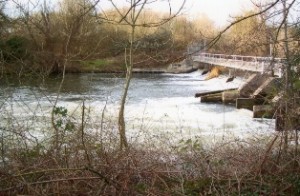 The Environment Agency latest Water Situation report shows conditions in October contrast sharply to the same time last year when rainfall, river flows and groundwater levels were all very low.
The Environment Agency latest Water Situation report shows conditions in October contrast sharply to the same time last year when rainfall, river flows and groundwater levels were all very low.
Summary – October 2012
Following the general trend starting in April this year, October was a wet month. River flows and groundwater levels responded to the rainfall as soils became saturated. Conditions this October contrast sharply to the same time last year when rainfall, river flows and groundwater levels were all very low.
Rainfall
October was a wet month with 166% of long term average rainfall in the South East. The wettest day was the 5th , and the highest daily rainfall total of 34 mm was recorded on the 17 th at Osney Lock on the River Thames in Oxford. It has been the wettest October for 8 years in the South East, and the past 7 months have been the second wettest April to October on record. The same period in the year 2000 was the wettest in the 102 year record. This month contrasts with last October, when the South East only had 45% of average rainfall. The switch from dry conditions to wet is very marked with 160% average rainfall for the South East in the last 7 months and only 63% of average in the 7 months prior to this. Soil Moisture Deficit, Recharge and Groundwater Levels By the end of the month,
Soil Moisture
Deficits were mostly zero across the region, as persistently wet weather saturated the ground. Recharge estimates were above average for the month, and groundwater levels started to rise at some of the key monitoring sites. Groundwater levels have made a dramatic turnaround since last October, when more than half the key sites had notably or exceptionally low levels for the time of year. Groundwater levels at Rockley in the Upper Kennet catchment are now the highest for the end of October since 1968. In 2011 levels at Rockley were the second lowest on record for October. Only groundwater levels at Stonor in the West Chilterns remain below the normal range for the time of year.
River Flows
River flows responded to the rainfall, saturated catchments and high groundwater levels. Some flood alerts were issued for the most responsive catchments, as well as a few related to high tides combining with high river flows on the Thames. A total of 24 fluvial flood alerts were issued, but no flood warnings. River flows at most of the key sites in this report had higher than normal flows for October. The Coln at Bibury had the highest October flows on record, again in contrast to last October when it had the second lowest on record. River flows in the west of the region were higher for the time of year than those in the east.
Reservoir Storage/Water Resource Zone Stocks
Reservoir storage was above or close to average for the time of year, with many of the online reservoirs close to capacity.
Full report is available at
http://www.environment-agency.gov.uk/static/documents/Research/SE_regional_monthly_water_situation_report.pdf
Posted in News
Tagged Drought, Environment Agency, Flood, Water Report
Comments Off on Water Situation report shows October contrast sharply to the same time last year
Angling Groups say Green Drainage is an Essentail part of Thames Tunnel
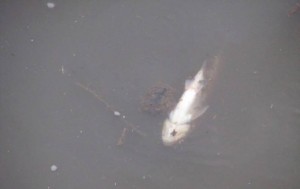 Green drainage must accompany Thames Tunnel, say angling groups Opponents of Thames Supersewer urged to embrace both solutions after US presentation
Green drainage must accompany Thames Tunnel, say angling groups Opponents of Thames Supersewer urged to embrace both solutions after US presentation
A US wastewater expert has urged London to embrace the Thames Tunnel as the only solution to end the scandal of millions of tonnes of untreated sewage that enters the Thames each year through the city's combined sewers.
Members of the Thames Tunnel Now coalition, an expanding collective of environmental and amenity groups committed to cleaning up London's river, have called upon opponents of the project to acknowledge that green infrastructure cannot be an alternative to the Thames Tunnel, but an important addition. This was the message from America following a presentation this week to water industry experts by Virgil Adderley, CSO programme manager for the city of Portland in Oregon.
Mr Adderley explained how Portland had initially sought to solve the pollution of the Willamette River system from Oregon's 50 plus Combined Sewer Overflows (CSOs) by introducing a comprehensive system of Sustainable Urban Drainage (SuDs) without resorting to building a separate tunnel to capture the discharges. After more than 20 years of work and studies, the city of Portland concluded that while green drainage had an important role to play in less built up areas, it was no substitute for a tunnel. In his presentation at Glaziers Hall, Southwark Virgil Adderley said: "Whatever we tried, we found that a large tunnel is needed to achieve acceptable levels of CSO control.
Green infrastructure is important but only as a complimentary measure…" Recently opponents of the Thames Tunnel have claimed it would be possible to retrofit London's entire 150 year old drainage system to achieve total separation of sewage and rainwater. The Portland Study shows beyond any doubt that even in a much less densely populated environment, green infrastructure solutions alone cannot solve the problems of the Thames Tideway.
Martin Salter, National Campaigns Coordinator for the Angling Trust, said: "If you want a clean river and thriving fish life in our capital city, there is no alternative to building the Thames Tunnel."
Dave Harvey from the Thames Anglers Conservancy said "Portland shows that addressing urban drainage problems with (SuDs) can substantially reduce river pollution but after years of studies was no substitute for a tunnel. Londoners deserve their river back."
Posted in News
Tagged Pollution, Sewage, Super Sewer, Thames Water, Tideway Tunnel
Comments Off on Angling Groups say Green Drainage is an Essentail part of Thames Tunnel
Devon caravan park fined for polluting a tributary of the River Dart with sewage
 A South Devon caravan park has been ordered to pay £33,089 in fines and costs for polluting a tributary of the River Dart with sewage.
A South Devon caravan park has been ordered to pay £33,089 in fines and costs for polluting a tributary of the River Dart with sewage.
The case was brought by the Environment Agency. The operators of the Falcon and Hillside Park, Totnes Road, Paignton continued to discharge poor quality sewage effluent into the Longcombe Stream despite repeated requests from the Environment Agency to improve the site’s sewage treatment plant. A local farmer said cattle kept in a field close to the caravan park refused to drink from the stream and he had to provide them with an alternative water supply.
The previous owners of the site had permission to discharge treated sewage effluent into the Longcombe Stream that flows across farmland down to the River Dart near Totnes. This permission is known as a ‘consent’. In 2008 the new owners of the site, Hatchmere Park Ltd, were warned by the Environment Agency that the treatment plant wasn’t operating properly and was causing pollution. In 2009 and 2010 the Agency took a series of formal effluent samples at the caravan park to monitor the performance of its sewage treatment works.
All four samples failed including one ‘massive’ failure. The owners were told they were contravening conditions of the site’s consent. In October 2009 an Agency officer inspected the site and, once again, saw evidence of poor maintenance. A ditch close to the effluent discharge point was ‘black and putrid’ and there was a thick accumulation of brown sewage sludge at the point where the ditch joined the Longcombe Stream. Sewage-related debris (sanitary wastes) were visible around the discharge pipe. When the officer entered the sewage plant compound he found signs of inadequate treatment including poor settlement, abnormal foaming on the surface of the effluent and a build up of sludge in the final chamber.
The Agency issued Hatchmere Park Ltd with an Anti-Pollution Works Notices to encourage the company to carry out the necessary improvements and safeguard the environment. In October 2011 an officer returned to the site to see if the owners had complied with the anti-pollution notice. He found there had been no improvement in the performance of the sewage treatment plant. Sewage fungus, a sign of chronic pollution, was clearly visible in the Longcombe Stream.
‘The current owner failed to improve the performance of the treatment plant at this site despite receiving guidance, encouragement and advice from the Agency over a number of years. In-action on the part of the site operator resulted in continued illegal discharges of sewage into a rural stream. In the end we were left with no choice other than to prosecute,’ said Pete Ball for the Environment Agency. ‘The River Dart is used extensively for recreation and is also an important habitat for salmon and sea trout. It is also used as a commercial shellfishery so it is important tributaries such as the Longcombe Stream are safeguarded from pollution,’ said Pete Ball. Appearing before Torbay magistrates.
Hatchmere Park Ltd, of Nottingham Road, Sedgebrook, Grantham, Lincolnshire, was fined £20,000 and ordered to pay £13,089 costs after pleading guilty to three offences of discharging without a permit and non-compliance with two notices. Magistrates also ordered the company to carry out improvements works to ensure it complies with the Anti-Pollution Notices by March 31, 2013.
Posted in News
Tagged Environment Agency, Pollution, Sewage
Comments Off on Devon caravan park fined for polluting a tributary of the River Dart with sewage


